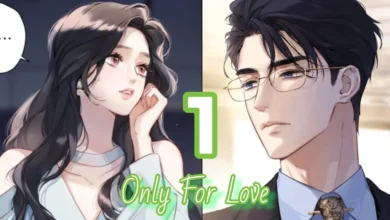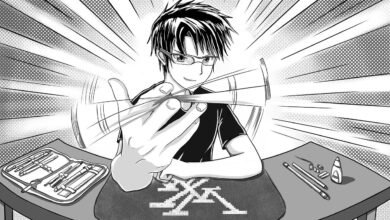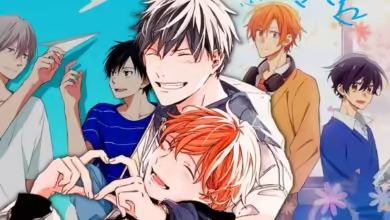Exploring Yaoi Manga: Understanding the World of Boys’ Love and Its Fans

Introduction
Yaoi manga is a unique genre of Japanese manga that tells romantic stories between male characters, often with deep emotions and intricate relationships. This genre, sometimes referred to as Boys’ Love (BL), originated in Japan in the 1980s and has gained a massive following worldwide medialops. What makes yaoi manga different from other manga genres? And why is it so popular among readers known as fujoshi and fudanshi? In this article, we’ll explore the history, appeal, and cultural significance of yaoi manga, as well as its influence outside Japan.
What is Yaoi Manga?
To start, yaoi manga focuses on relationships between male characters and often contains themes of love, friendship, and, sometimes, intense emotional connections. The term “yaoi” itself is an acronym for the Japanese phrase yama nashi, ochi nashi, imi nashi, which means “no climax, no fall, no meaning.” This term suggests that these stories aren’t necessarily driven by traditional story structures but are instead focused on the romance and dynamics between the characters.
Again, while yaoi is sometimes used interchangeably with Boys’ Love (BL), the terms have slight differences. BL often covers a broader range of relationships and themes, whereas yaoi may depict more mature or intense scenes between characters. Nevertheless, many fans simply use the terms yaoi and BL to describe any manga or anime that explores romantic or emotional connections between men.
A Brief History of Yaoi Manga
The genre of yaoi manga started around the 1980s in Japan, with artists like Hatsu Akiko and Sakata Yasuko leading the way. These artists were part of a group known as the Year 24 Group, a collection of female manga creators who introduced groundbreaking themes in Japanese comics. Through their work, these artists brought forth new ways of telling stories that focused on relationships and emotions rather than traditional hero-driven narratives.
Furthermore, yaoi manga initially emerged as a subgenre among women in Japan who enjoyed stories about male romance. Over time, the genre gained popularity not only in Japan but also in other parts of the world, especially in the West. Today, yaoi manga has evolved into a global phenomenon with dedicated fan communities.
Why Do Fans Love Yaoi Manga?
Yaoi manga appeals to readers for various reasons. First, it explores themes of love, vulnerability, and identity, which can be universally relatable. Readers get to see characters navigate complex emotions, face personal challenges, and grow through their relationships. Besides, these stories offer fresh perspectives on romance by portraying different dynamics that readers might not find in other romance genres.
Moreover, yaoi manga provides a unique space for exploring characters who defy traditional gender roles. This genre often breaks away from conventional ideas about masculinity, allowing male characters to express emotions openly dracovish serebii. This can be refreshing for fans who enjoy seeing characters in non-traditional roles. In addition, fans may appreciate the genre for its artistic style, which often emphasizes beautiful and detailed illustrations of the characters.
The Culture of Fujoshi and Fudanshi
The fans of yaoi manga are known by special terms: fujoshi for female fans and fudanshi for male fans. The term fujoshi literally translates to “rotten woman” or “rotten girl.” This term was originally used as a teasing nickname because of the unique interests of yaoi fans. However, fans later adopted it as a fun, self-identifying label. Fujoshi and fudanshi communities often celebrate yaoi manga and enjoy discussing storylines, characters Chainsaw Man Manga, and fan theories with one another.
However, there can be some stigma attached to being a yaoi fan. For example, some fans of other manga genres may not understand or appreciate yaoi, which has led to misunderstandings about the genre. As a result, many fujoshi and fudanshi use online accounts that do not reveal their real identities to feel more comfortable sharing their interests. Nevertheless, these fan communities remain strong and are often very supportive of each other.
How is Yaoi Manga Different from Other Romance Genres?
Yaoi manga differs from other romance genres in several ways. First, it centers exclusively on male-male relationships, which sets it apart from traditional heterosexual romance manga. This focus allows readers to experience diverse stories that deal with unique relationship dynamics. Then, while some romance manga follow typical plot structures, yaoi manga may skip over these to concentrate more on the emotional depth between characters.
Furthermore, yaoi manga often features a specific pairing dynamic known as seme (the dominant character) and uke (the submissive character). This structure is common in many yaoi stories and creates interesting dynamics between the two characters. The seme and uke roles can also symbolize different personality traits, adding layers to the characters and their relationship.
The Spread of Yaoi Manga Around the World
Over the years, yaoi manga has found a strong following outside Japan, especially in Western countries. International fans have embraced the genre and, in some cases, created their own communities around it. Online platforms, forums, and fan events have helped these communities grow. What’s more, yaoi manga is now widely available in English and other languages, making it accessible to a global audience.
In addition, many Western fans contribute to the yaoi community by creating fan art, fan fiction, and even cosplay based on their favorite characters. This allows fans to express their love for the genre in creative ways, and it strengthens the sense of connection between yaoi fans from different backgrounds.
The Cultural Impact of Yaoi Manga
Yaoi manga has had a significant cultural impact, particularly in promoting discussions about gender and relationships. It challenges traditional ideas of romance and gender roles by showing male characters in relationships that emphasize emotional openness and support. Besides, yaoi manga can open up conversations about LGBTQ+ themes, offering a way for readers to explore and better understand diverse relationships.
Moreover, for some fans, reading yaoi manga is a way to learn about acceptance and empathy. The genre often portrays struggles, acceptance, and moments of self-discovery that can resonate deeply with readers. Additionally, manga’s impact extends beyond Japan, as it influences other media, including webcomics, fan fiction, and even Western TV shows that incorporate similar themes.
Conclusion
In conclusion, yaoi manga is a fascinating genre that tells unique stories about love and relationships between men. From its beginnings in Japan with the Year 24 Group, manga has grown into a beloved genre worldwide. It attracts fans for its emotional depth, beautiful art, and the strong connections between characters. Whether you’re a fujoshi, fudanshi, or simply curious about the genre, manga offers a wide world of stories to explore. Through its impact on culture and its devoted fan community, yaoi manga shows that love and friendship come in many forms and can be appreciated by readers everywhere.





